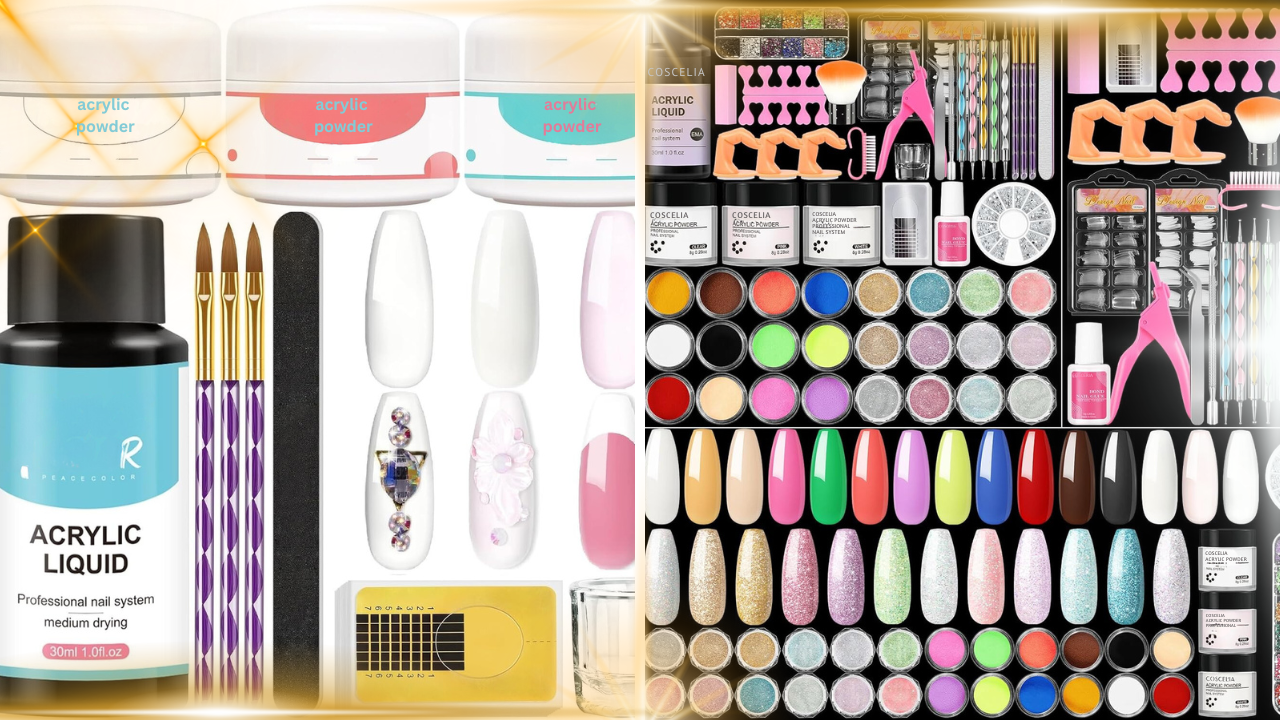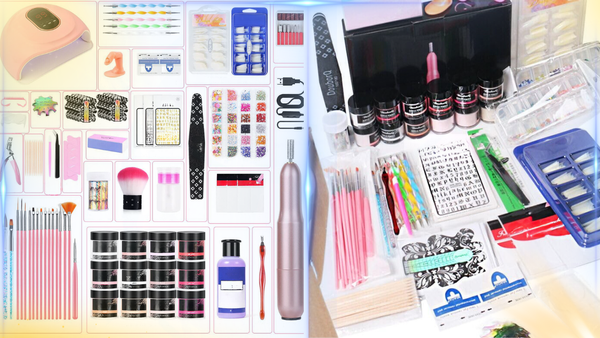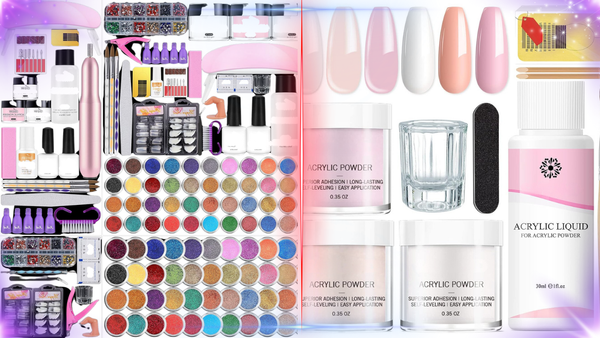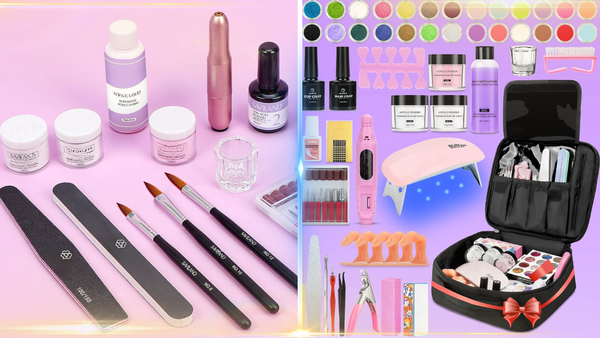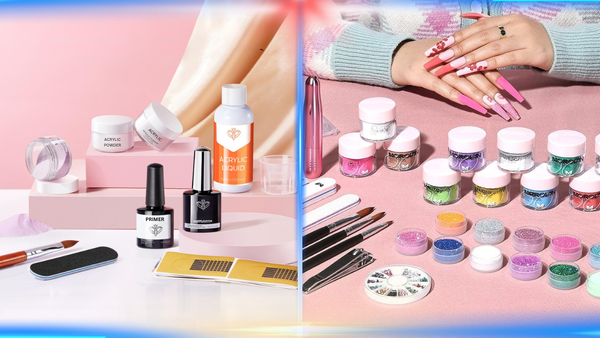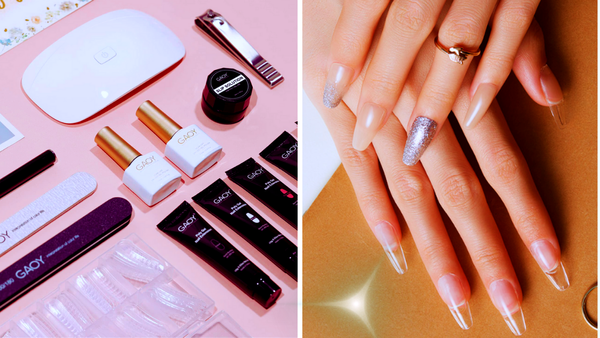Key Takeaways:
- Acrylic nail kits can pose health risks if not used properly.
- Proper ventilation and protective measures are essential when using acrylic nail products.
- Understanding the potential hazards can help you make informed decisions about your nail care routine.
Introduction
Acrylic nails have become popular for those seeking durable and long-lasting manicures. However, the question remains: are acrylic nail kits safe? This article delves into the safety concerns associated with acrylic nails, providing the information you need to make an informed decision.
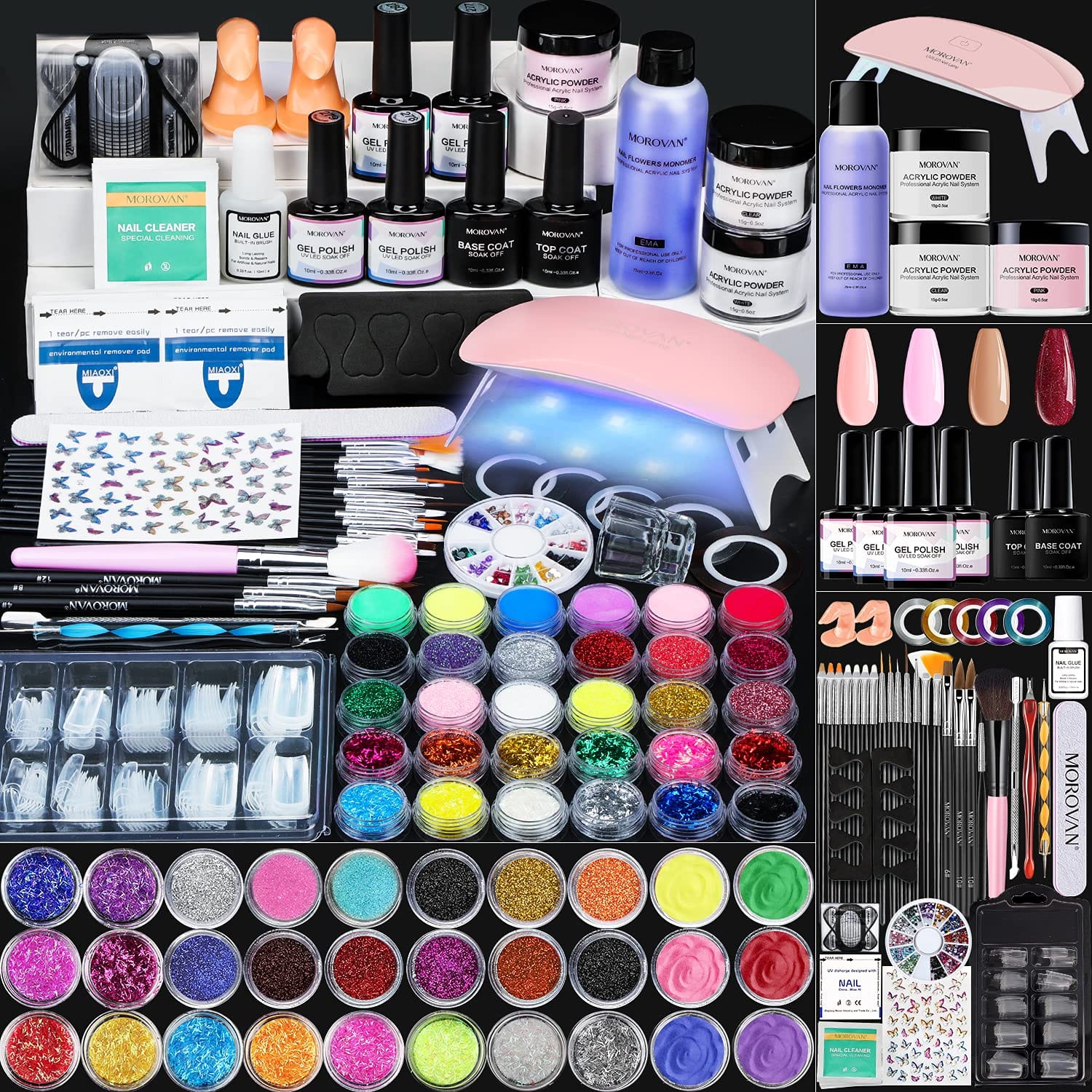
Understanding Acrylic Nails
Acrylic nails are a type of artificial nail created by mixing a liquid monomer and a powder polymer to form a hard, protective layer over your natural nails. This mixture is applied to the nail plate and shaped using a brush. Once the acrylic paste hardens, it can be filed and painted to achieve the desired look.
Acrylic nails differ from gel nails in that gel nails are cured under a UV light, while acrylic nails harden naturally. Both types of artificial nails have their potential risks; for instance, the chemicals used in acrylic nail products, such as formaldehyde, can be harmful if inhaled or if they come into contact with your skin. In contrast, gel nails can cause skin irritation and potential UV exposure risks.
While acrylic nails offer a polished and durable finish, they can also pose health risks if not applied and maintained correctly.
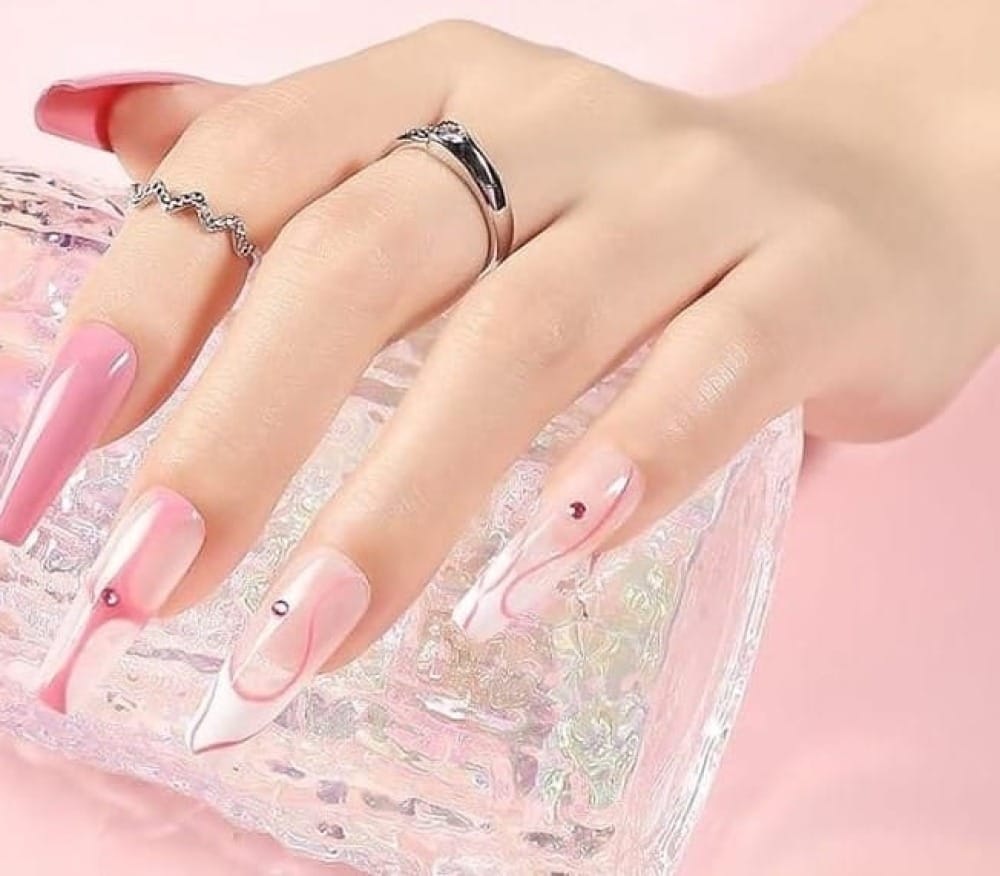
Health Risks Associated with Acrylic Nails
One of the primary concerns with acrylic nails is the potential for allergic contact dermatitis. This condition occurs when the skin becomes irritated and inflamed due to exposure to certain chemicals. Symptoms can include redness, itching, and swelling around the nail bed and cuticles.
It is important to visit a professional to properly remove fake nails to avoid damaging natural nails.
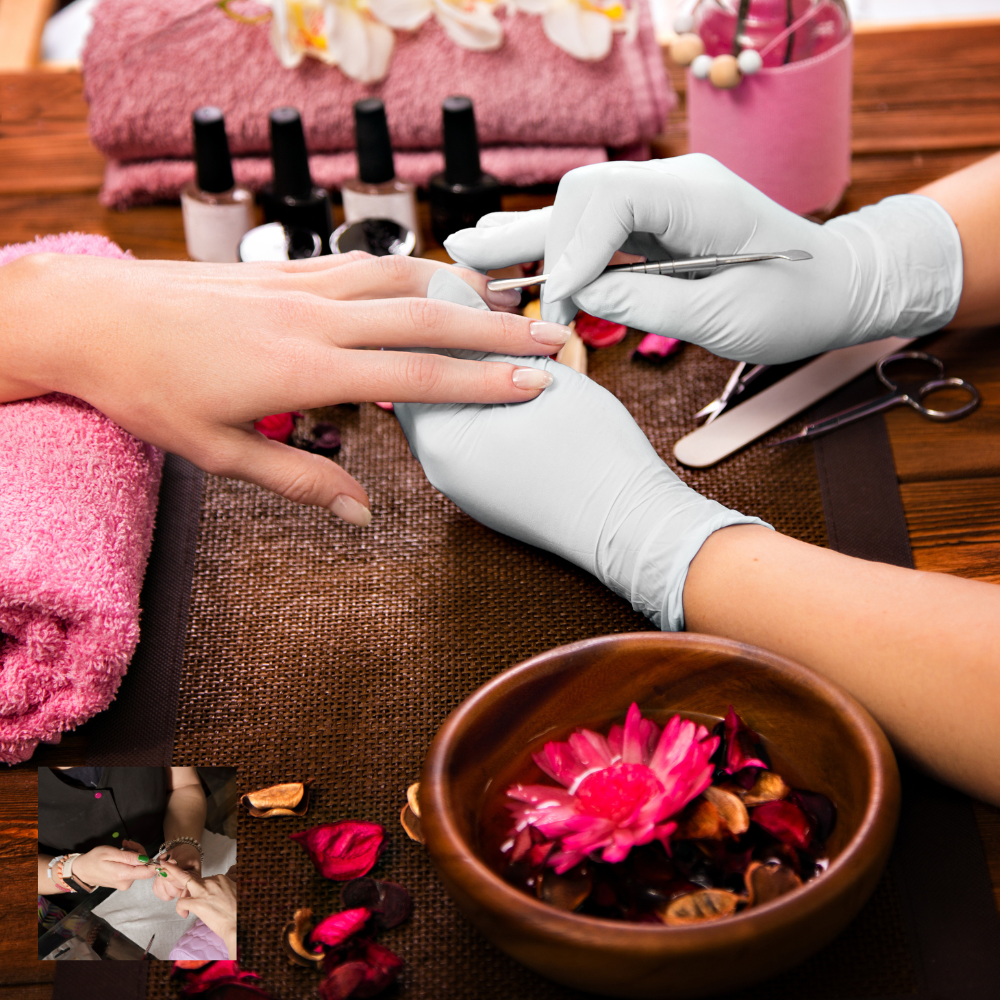
Another risk is bacterial infections. If the acrylic nails are not applied correctly or if they lift from the natural nail, moisture can become trapped underneath, creating a breeding ground for bacteria. This can lead to painful infections that may require medical treatment.
The Importance of Proper Ventilation
When using acrylic nail kits, working in a well-ventilated area is crucial. The fumes from the chemicals can be harmful if inhaled over extended periods. Proper ventilation helps disperse these fumes, reducing the risk of respiratory and other health problems.
Nail salons should have adequate ventilation systems to protect both clients and nail technicians. If you do your nails at home, consider working near an open window or using a fan to improve air circulation.
Protective Measures for Nail Technicians
Nail techs are at a higher risk of exposure to the harmful chemicals found in acrylic nail products. Wearing gloves can help protect the skin from direct contact with these substances. Additionally, using a mask can reduce the inhalation of acrylic nail fumes.
Sterilization of instruments is crucial to prevent infections and other potential risks associated with nail salons. Regular breaks and proper hygiene practices are also essential for nail technicians. Washing hands thoroughly after each client and keeping the work area clean can minimize the risk of health issues associated with acrylic nails.
The Role of UV Light in Acrylic Nails
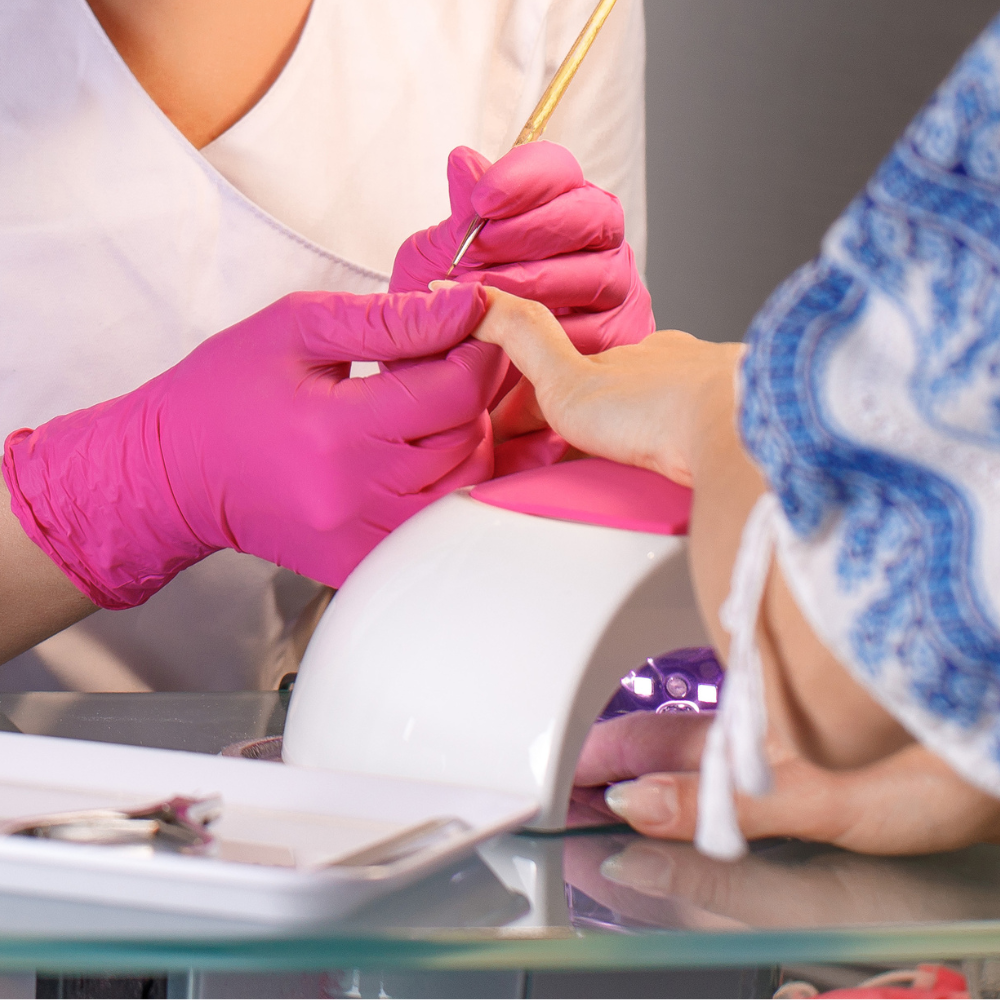
UV light is often used to cure gel nails, but it can also be used to apply acrylic nails. Prolonged exposure to UV light has been linked to an increased risk of skin cancer. To minimize this risk, it is advisable to use UV light sparingly and protect your skin with sunscreen or gloves.
Some nail salons offer LED lights as an alternative to UV lights. LED lights cure nails faster and emit less harmful radiation, making them a safer option for clients and nail technicians.
Signs of Allergic Reactions
If you experience any signs of an allergic reaction after getting acrylic nails, it is essential to seek medical advice. Common symptoms include redness, itching, and swelling around the nail bed and cuticles. In severe cases, you may also experience blistering or peeling of the skin.
Removing the acrylic nails and avoiding further chemical exposure can help alleviate the symptoms. Your doctor may also recommend topical treatments or medications to reduce inflammation and discomfort.
Preventing Bacterial Infections
To prevent bacterial infections, it is crucial to ensure that the acrylic nails are applied correctly and adhere firmly to the natural nail. Any gaps or lifting can allow moisture to become trapped, creating an environment for bacteria to thrive.
Regular maintenance and proper hygiene practices can also help prevent infections. This includes cleaning your nails thoroughly, avoiding excessive moisture, and not picking or pulling at the acrylic nails.
The Impact on Natural Nails
Acrylic nails can significantly impact natural nails. Prolonged use can lead to thinning and weakening of the nail plate, making nails more susceptible to breakage and damage. It is essential to give natural nails a break from acrylics to allow them to recover and regain their strength.
When doing your own nails at home, it is crucial to take precautions and follow protective measures, including reading instructions and warning statements.
Using a nail strengthener and moisturizing your nails can help maintain their health. Additionally, avoiding harsh chemicals and using gentle nail care products can prevent further damage.
The Role of Acetone in Acrylic Nail Removal
Acetone is commonly used to remove acrylic nails, but it can be harsh on natural nails and skin. Prolonged exposure to acetone can cause dryness and irritation, leading to peeling and cracking of the nails and cuticles.
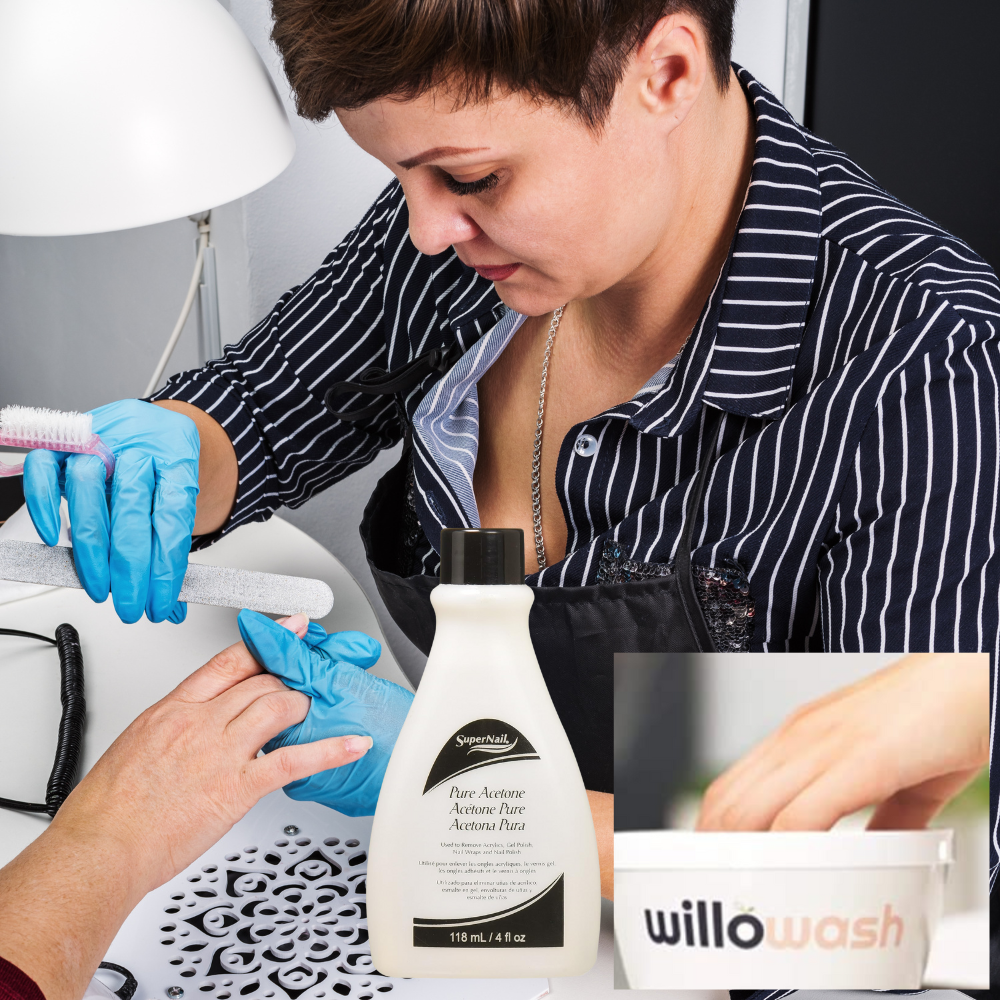
To minimize the damage, it is advisable to use acetone sparingly and to follow up with a moisturizing treatment. Soaking your nails in warm water and using a gentle nail file can also help remove the acrylic nails without causing excessive damage.
Alternatives to Acrylic Nails
If you are concerned about the safety of acrylic nails, there are several alternatives to consider. Gel nails are a popular option that offers a similar look and durability without harsh chemicals. Gel polish is cured under UV or LED light, providing a long-lasting finish.
Another option is dip powder nails, which involves dipping your nails into a colored powder and sealing them with a clear topcoat. This method is less damaging to the natural nails and does not require UV light.
The Importance of Professional Application
While DIY acrylic nail kits are available, it is often safer to have your nails done by a professional nail technician. A trained technician can ensure that the acrylic nails are applied correctly and minimize the risk of health issues.
Professional nail salons also have access to high-quality products and equipment, which can further reduce the risk of complications. If you choose to do your nails at home, follow the instructions carefully and use reputable products.
The Role of Regular Maintenance
Regular maintenance is essential for keeping your acrylic nails in good condition and preventing health issues. This includes filling in the gaps as your natural nails grow, cleaning your nails thoroughly, and avoiding excessive moisture.
It is also important to monitor your nails for any signs of damage or infection. If you notice any changes in the appearance or health of your nails, seek advice from a professional nail technician or a healthcare provider.
The Impact of Chemicals on Skin and Nails
The chemicals used in acrylic nail products can significantly impact your skin and nails. Prolonged exposure can lead to dryness, irritation, and allergic reactions. It is essential to use these products with caution and take steps to protect your skin and nails.
Using a barrier cream or moisturizer can help protect your skin from the harsh chemicals. Additionally, avoiding direct contact with the chemicals and using protective equipment can minimize the risk of adverse reactions.
The Role of Proper Hygiene
Proper hygiene is crucial for preventing health issues associated with acrylic nails. This includes washing your hands thoroughly, keeping your nails clean, and avoiding excessive moisture. Regularly disinfecting your nail tools and equipment can also help prevent the spread of bacteria and infections.
If you visit a nail salon, make sure that the staff follows proper hygiene practices. This includes using clean tools, disinfecting surfaces, and maintaining a clean and sanitary environment.
The Importance of Listening to Your Body
It is essential to listen to your body and to be aware of any signs of discomfort or health issues. If you experience any pain, irritation, or changes in the appearance of your nails, seek advice from a professional. Ignoring these signs can lead to more severe health problems and complications.
Taking breaks from acrylic nails and giving natural nails time to recover can also help maintain their health. Regularly moisturizing your nails and cuticles and using gentle nail care products can prevent damage and promote healthy nail growth.
Summary
Acrylic nail kits can offer a beautiful and durable manicure but also have potential health risks. Proper ventilation, protective measures, and regular maintenance are essential for minimizing these risks. By understanding the potential hazards and taking steps to protect your health, you can enjoy the benefits of acrylic nails while keeping your natural nails and skin in good condition.
FAQ Section
Are acrylic nail kits safe to use at home?
Acrylic nail kits can be safe at home if you follow the instructions carefully and take proper precautions. To minimize health risks, ensure you work in a well-ventilated area, use protective equipment, and follow proper hygiene practices.
How can I prevent allergic reactions to acrylic nails?
To prevent allergic reactions, avoid direct contact with the chemicals used in acrylic nail products. Wear protective equipment such as gloves and masks, and consider using alternatives like gel nails or dip powder nails if you have sensitive skin.
What should I do if I experience an infection or allergic reaction?
If you experience an infection or allergic reaction, remove the acrylic nails and seek medical advice. Your doctor may recommend topical treatments or medications to reduce inflammation and discomfort. Avoid further chemical exposure and follow proper hygiene practices to prevent future issues.
